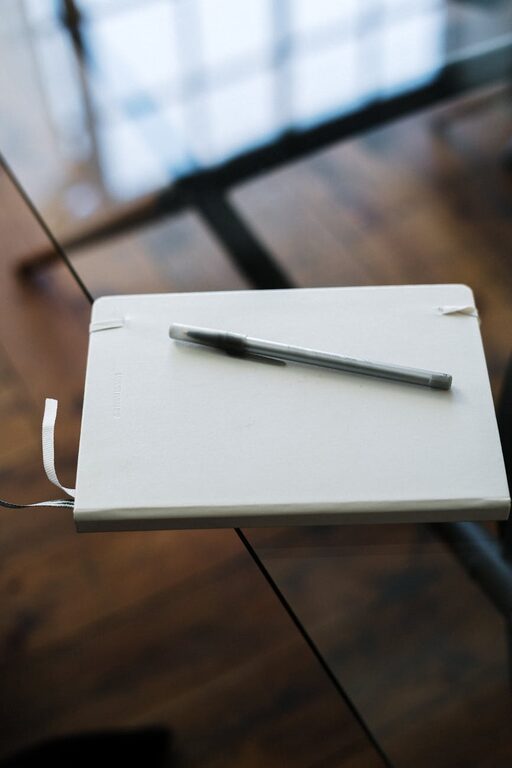What Is Bullet Journaling?
Bullet journaling is a customizable and flexible system that combines planning, organizing, and creativity in one notebook. Created by Ryder Carroll, it uses simple symbols and short entries to help you keep track of tasks, events, and thoughts.
Unlike traditional planners, bullet journals can be adapted to your needs, making them popular among people who want to stay organized while expressing their creativity.
Why Start a Bullet Journal?
There are many reasons to start bullet journaling:
– Improve organization: Keep all your tasks, appointments, and goals in one place.
– Increase productivity: Track your daily habits and deadlines to stay on top of responsibilities.
– Reduce stress: Writing down your thoughts and plans helps clear your mind.
– Encourage creativity: Design layouts, doodle, or decorate pages your way.
– Reflect and grow: Review your progress and goals regularly.
If these benefits sound appealing, it’s easy to get started — even with just a notebook and pen.
What You’ll Need to Begin
Starting a bullet journal doesn’t require fancy materials. Here’s a basic list:
– Notebook: A dotted or grid notebook is popular, but lined or blank works too.
– Pen: Any pen you like is fine; some prefer fine liners or gel pens.
– Ruler: Useful for drawing straight lines and creating neat layouts.
– Optional supplies: Colored pens, markers, stickers, or washi tape for decoration.
Remember, the focus is on functionality, so don’t worry about having perfect tools from the start.
Basic Bullet Journal Components
Here are the key parts of a bullet journal system:
1. Index
This is the “table of contents” that helps you find pages quickly. Reserve the first few pages for your index, and update it as you add new sections.
2. Future Log
A place to note upcoming appointments, events, or goals for the next few months. It helps keep long-term plans visible.
3. Monthly Log
Each month gets its own page or spread showing a calendar or list of dates and key events. You can also list monthly goals here.
4. Daily Log
This is where you write daily tasks, events, and notes. Use bullets or symbols to mark them.
5. Collections
These are themed lists or trackers, such as books you want to read, habit trackers, meal plans, or project checklists.
Common Symbols and Keys
Bullet journaling uses simple marks to make entries easy to scan:
– Task: • (dot)
– Completed Task: X
– Migrated Task: > (moved to another day)
– Event: O (circle)
– Note: — (dash)
You can customize these symbols, but keeping them consistent helps you stay organized.
Step-by-Step: Setting Up Your First Bullet Journal
Follow these steps to create your first bullet journal:
Step 1: Create the Index
Reserve 2-4 pages at the front for your index. Leave space for page numbers and titles.
Step 2: Set Up Your Future Log
Divide 2-4 pages into sections for upcoming months. Write important future dates in the appropriate section.
Step 3: Prepare Your First Monthly Log
On a new page, write the month at the top. List dates down the side with any planned events or appointments.
Step 4: Add Your Daily Logs
Start with today’s date and list your tasks, events, and notes. Add new daily logs as the days go by.
Step 5: Add Collections as Needed
Create any special lists or trackers you want, such as habit trackers, reading lists, or gratitude logs. Add these pages and note their titles and page numbers in your index.
Tips to Stay Consistent
– Keep it simple: Start with the basics and add more as you get comfortable.
– Use your own style: Don’t worry about making it perfect—your bullet journal should serve you.
– Set aside time: Spend 5-10 minutes each day or late evening updating your journal.
– Review and migrate tasks: At the end of each day or week, review unfinished tasks and move them forward.
– Experiment: Try different layouts and collections to find what works best.
Bonus Ideas for Beginners
– Habit tracker: Track habits like water intake, exercise, or reading.
– Gratitude log: Write a daily note about something you’re thankful for.
– Brain dump: Use a page to jot down any thoughts or ideas to clear your mind.
– Goal setting: Break larger goals into smaller, manageable tasks.
– Mood tracker: Track your mood to understand patterns over time.
Final Thoughts
Bullet journaling is a personal tool that can improve your organization and creativity. By starting with basic elements and simple layouts, you can build a system tailored to your lifestyle. Remember, the key is consistency and making the journal your own. Give yourself permission to experiment and enjoy the process!
If you’re ready to give bullet journaling a try, gather your supplies and start today. With just a few minutes each day, you’ll soon notice more clarity and productivity in your routine. Happy journaling!

